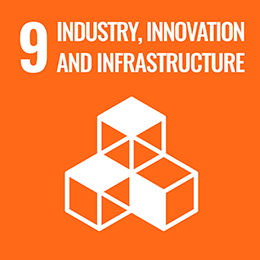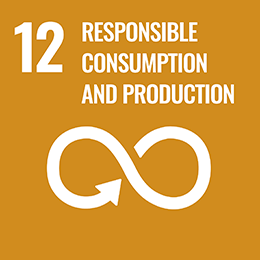Fashion Footprint

Share this article
Legacy of Luxury
"The future of fashion is circular" - Stella McCartney
As Fashion Week draws to a close in Paris, the $2.4 trillion industry that employs some 60 million people and creates 100 billion garments a year is finally ready to embrace a new trend: ethical fashion.
On a green nylon carpet made from rescued fishing nets, François-Henri Pinault, chairman and chief executive officer of Kering, home of Gucci, Yves Saint Laurent, Alexander McQueen and other luxury labels, received the 2019 GCFA Visionary Award for championing sustainability in the fashion industry.
Just a month earlier, at the G7 Summit, Pinault signed up 32 companies representing some 150 brands to support Emmanuel Macron’s Fashion Pact that revolves around three science-based targets: achieving zero greenhouse gas emissions by 2050 and protecting biodiversity and the oceans.
But more than that, Kering, ranked second in the Corporate Knights’ Global 100 Index, a ranking of the world's most sustainable corporations, has made its environmental profit and loss statement public. Its operations are now environmentally accountable and last year Kering’s environmental impact in dollar terms was $554.8 million.
Projections suggest that the global apparel and footwear industry will have grown by 81%, to 102 million tons by 2030, and if nothing changes by 2050, the fashion industry will account for a quarter of the world’s carbon budget.
A recent KPMG survey revealed, however, that when it comes to fashion, environmental awareness has yet to impact the average shopper’s habits.
And yet according to the UK’s House of Commons Environmental Audit Committee report, Fixing Fashion: clothing consumption and sustainability, textile production contributed 1.2 billion tonnes of CO₂ equivalent in 2015, which is more than international aviation and shipping combined.
Not only that, one cotton t-shirt consumes 2,700 litres of water and a single pair of jeans—a $90 billion industry set to grow to $105 billion by 2023—takes 7,600 litres, according to Stephen Leahy’s author of Your Water Footprint. Clothes also release half a million tonnes of microfibres into the ocean every year, equivalent to more than 50 billion plastic bottles.
Add to that chemical pollution. The Pearl River delta, on which Xintang the Blue Jeans Capital of the World is situated, has seen its tributaries turn blue. The World Bank estimates that 17% to 20% of industrial water pollution comes from textile dyeing and finishing treatments.
‘Woke’ customers pushing for greater transparency into supply chains—the deaths of more than 1,100 garment workers at the Rana Plaza collapse in Bangladesh in 2013 among the reasons—were one of the 10 defining trends of the 2019 fashion agenda, according to McKinsey’s The State of Fashion 2019: A Year of Awakening.
According to McKinsey’s Global Fashion Index, 97% of economic profits for the whole industry are earned by just 20 companies and most of them are in the luxury segment, where there is a delicate dance between selling a dream of success and indulgence but assuring customers (and investors) that it can be done sustainably.
Giorgio Armani, Versace, Hugo Boss, Michael Kors and Tom Ford have all sworn off fur, while Burberry Group agreed to stop destroying unsold stock and in July, LVMH, owner of Louis Vuitton, Christian Dior and Dom Perignon, bought a stake in Stella McCartney’s fashion label, famed for vegetarian leather and recycled polyester.
At Gucci’s Paris boutique products made with more eco-friendly materials are displayed with little or no fanfare that the Dionysus handbag is now tanned without chromium or that the palladium hardware on the new Zumi handbag is sourced from recycled medical equipment.
Catering to the environmentally conscious ‘Generation Less’, as well as aiming to reverse the throwaway culture of ‘fast fashion’, means the zero-waste circular economy is now firmly part of the apparel industry.
Ellen MacArthur Foundation’s A new textiles economy: Redesigning fashion's future states that every second the equivalent of one garbage truck of textiles eventually ends up on landfills or incinerated. That’s 73% of the world’s clothing.
Additionally, an estimated $500 billion in value is lost every year due to clothing that has hardly been worn, and more than half of fast fashion produced is disposed of in under a year.
The foundation’s report, backed by groups such as H&M, which is aiming to have 100% recycled or sustainably sourced materials by 2030, as well as Kering and C&A, suggests the solution is the ‘Make Fashion Circular’ system where clothes are designed to last longer, be worn more, be easily rented or resold and recycled and not release toxins or pollute.
Its ambition is to ensure clothes are made from safe and renewable materials, promote new business models to increase clothing use, and turn old clothes into new.
In line with this drive, H&M, the Swedish group that also owns Cos, & Other Stories and Weekday brands, has teamed up with The Renewal Workshop to create a collection consisting of mended clothes.
The move is slightly reminiscent of a UK government introduced wartime initiative called ‘Make Do and Mend’, designed to encourage people to revive and repair worn-out clothes.
Patagonia, which also has a buy-back programme and donates 1% of sales to the preservation and restoration of natural environments, has done something similar by offering repair and recycling services in stores.
Meanwhile Inditex, Zara’s parent company and the third-largest apparel company in the world, announced that by 2025 all of its collections would be made from 100% sustainable fabrics; it is switching to renewable energy; and pledging to send zero waste to landfill.
Technology too has a part to play in the future of fashion. Kering’s Materials Innovation Lab has been working with US cotton trade group Supima to roll out cotton with a documented ‘chemical fingerprint’ that allows a swatch from a poplin shirt to be traced all the way back to the farm.
While the Connect Fashion Global Initiative backed by partners such as H&M, C&A Foundation and Microsoft, has created the CircularID, a digital system like a passport to identify products and materials for reuse, resale, repair, rental and recycling.
Recycling is now more than just trendy; it’s a business opportunity. Last year’s Spring fashion week saw dresses made of plastic bottles. Today brands such as Adidas—84th in the Corporate Knights Index—use recycled plastic for their clothes.
Adidas has teamed up with Parley to make trainers from ocean plastic, while Prada will use ocean waste plastic to make all of its iconic nylon accessories by the end of 2021. Everlane’s ReNew outerwear collection is made from some three million plastic water bottles.
Fashion sustainability pioneer, Stella McCartney—winner of the GCFA Groundbreaker Award—has created a hoodie for Adidas that is made by liquifying old cotton clothing. The Evrnu’s NuCycl technology as well Renewcell, Ambercycle, Worn Again are all processes that turn old clothing into high-quality raw materials.
Spinnova in Finland grinds up wood pulp and agricultural waste into tiny fibres that are spun into a cotton-like thread. Meanehile, cult LA brand Reformation uses fabric such as TENCEL Lyocell, a semi-synthetic fibre with properties almost identical to cotton, one that along with sugarcane ‘SweetFoam’ and recycled bottles make Allbirds’ shoes.
Even the second hand market has undergone its own renaissance, made even more hip by Bambi-designed collection points. The #lovenotlandfill movement teamed up with the British street artist, dubbed the female Banksy, to create charity clothes banks.
Now often referred to as fashion re-commerce, the resale market has grown 21 times faster than the retail market over the past three years and is set to reach $51 billion by 2051, according to the 2019 Resale Report.
The US online resale sector includes thredUp and TheRealReal, while there is Depop in the UK and YCloset in China. Ten years on, the Vestiaire Collective, one of the early luxury resale platforms, partnered with Italy’s Camera Della Moda and the recent Green Carpet Awards to offer a pop up selection of rare vintage designer pieces.
Not only does embracing sustainable fashion address the industry’s environmental footprint, but company earnings could go up by one or two percentage points, and ultimately benefit to the global economy by $192 billion by in 2030.
In a world of scarce resources, conscious consumption is here to stay. But gone are the days where eco-friendly equates to beige, bland and boring. Like Stella McCartney before her, Gabriela Hearst is one of a cadre of designers that combines sustainability with luxury in what she terms ‘luxury with a conscience’.
Photo: © Niki Natarajan 2019
Artist: Bambi
Article for information only. All content is created and published by CdR Capital SA. The views and opinions expressed in this article are those of the author(s). Information on this website is only directed at professional, institutional or qualified investors and is not suitable for retail investors. None of the material contained on this website is intended to constitute an offer to sell, or an invitation or solicitation of an offer to buy any product or service. Nothing in this website, or article, should be construed as investment, tax, legal or other advice.
Related articles
Future of Food
Pea protein shrimp, lab grown burgers and cricket flour pancakes: sci-fi menu or the future of food? Population projections heading to 10 billion, meat demand increasing yet food production is not sustainable even if farmers are already growing enough.

Human Impact
Despite the Doomsday Clock hand remaining at two minutes to midnight in 2019, the imminent threats to humanity and planet continue as we enter a period of ‘new abnormal’. Three of the top five risks by likelihood (and four by impact) are environmental.

Water: Dying of Thirst
If the Colorado River is recognised as a person, it could become part of a solution to a global risk: freshwater scarcity. More than 70% of the world is covered in water (oceans make up 96.5% of the total) but not very much is useable freshwater.





